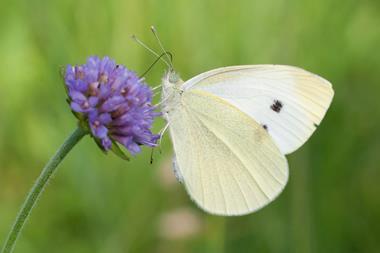Researchers conclude the mass death of honeybees in 1990s France was caused by the pesticide fipronil, not a neonicotinoid

A nearly three-decade-old mystery of mass honeybee mortality appears to have been solved by researchers in the UK. The collapse of bee colonies in France during the mid- to late-1990s was widely blamed on the neonicotinoid insecticide imidacloprid, but new research has revealed the likely culprit to be the much less high-profile fipronil. Imidacloprid hit the market in 1994 and fipronil was released in 1993, with both products being widely used on French sunflower crops.
A team from the University of Exeter quantified the toxicity and likely bioaccumulation of fipronil, imidacloprid, and two other commonly applied pesticides, in honeybees. They used a computer simulation of a honeybee colony to measure the effects of the pesticides, and ultimately found that only fipronil produced mass mortality.
Specifically, the simulations predicted 4000 to 9000 more bee deaths than control conditions during the first week of fipronil exposure, leading to colony collapse in just two or three weeks. Meanwhile, the other three pesticides didn’t generate mortality rates high enough to cause colony collapse.
The researchers also used gas chromatography-mass spectrometry (GC-MS) to test for bioaccumulation of these compounds, and only found signs of toxic bioaccumulation with fipronil. Their assays showed fipronil ingested by a honeybee in a single meal was present six days later, and the compound could therefore be lethal in even trace doses. Imidacloprid on the other hand did not appear to bioaccumulate in individual bees, and rapid post-exposure recovery was observed in honeybees as well as other insects, indicating reversible binding.
Dave Goulson, who studies the impacts of neonicotinoids on bees the University of Sussex in the UK, says this new research provides ‘clear evidence’ that fipronil bioaccumulates in honeybees, and it is therefore very likely to do so in other beneficial insects. ‘Exposure to fipronil is a likely cause of some instances of collapse of honeybee colonies,’ he states, suggesting that the regulatory process for pesticides has failed to protect the environment by ‘not detecting and flagging up’ fipronil’s potential for bioaccumulation. The use of fipronil for crop protection has only been banned within the EU since 2013.
Although the University of Exeter findings indicate that fipronil has a higher impact on bees than neonicotinoids, that does not mean that neonicotinoids should now be considered as safe, warns Edward Mitchell, an ecologist at the University of Neuchâtel in Switzerland. ‘The body of literature on this topic is very clear,’ he says. ‘This study adds to this by showing that fipronil is perhaps worse and certainly should not be considered as a substitute for neonics.’
Fipronil was also recently blamed for the death of at least one million bees near Cape Town, South Africa. Brendan Ashley-Cooper, beekeeper and vice-chairman of the Western Cape Bee Industry Association, says that he started to find thousands of dead bees in front of hives at many apiaries, beginning around mid-November this year.
‘I had my dead bees analysed and the results came back with the only pesticide being fipronil,’ Ashley-Cooper tells Chemistry World. He notes that some farmers admitted to using fipronil for the last decade or more to control ant problems. ‘We have had smaller losses before without realising what the problem was,’ he recalls.
References
P J Holder et al, Proc. Natl. Acad. Sci. USA, 2018, DOI: 10.1073/pnas.1804934115

















No comments yet